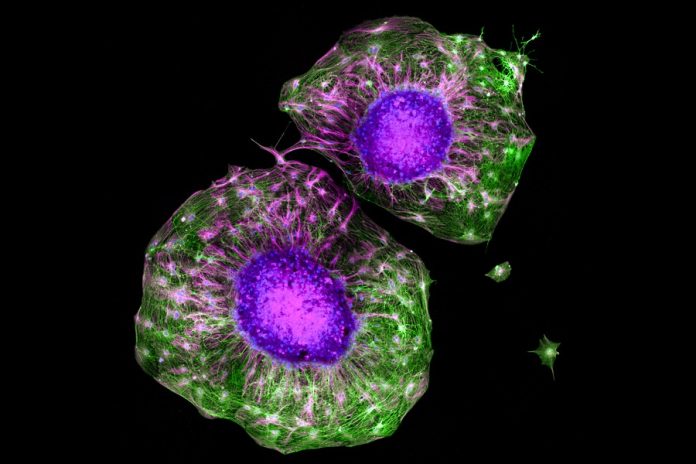
Exercise is a well-known boost for our body, strengthening muscles, bones, blood vessels, and even our immune system.
Now, a groundbreaking study by MIT engineers reveals that physical activity can also help neurons—cells in the brain and spinal cord—grow and mature.
The researchers found that when muscles contract during exercise, they release special biochemical signals called myokines.
These signals act as a kind of “soup” of growth factors, RNA, and proteins.
In a lab experiment, neurons exposed to this muscle-generated soup grew four times faster than those without it.
This exciting discovery suggests that exercise doesn’t just benefit our bodies; it has a powerful effect on our nervous system too.
Neurons are the cells that transmit signals in our bodies, controlling everything from muscle movement to complex thoughts.
In this study, the researchers observed that neurons responded to exercise in two surprising ways:
- Chemical Signals: Myokines released by exercising muscles help neurons grow and mature. When motor neurons—nerves that control voluntary muscle movement—were exposed to a myokine mixture, they grew much faster and farther. These neurons also showed improvements in maturity and functionality.
- Physical Movement: Neurons also respond to physical forces. Just like muscles stretch and contract during exercise, neurons are naturally pulled and stretched because they’re connected to muscles. The researchers mimicked this stretching in the lab by “jiggling” neurons using tiny magnets, and the results were just as remarkable—neurons grew as much from mechanical exercise as from the myokine solution.
To explore this muscle-nerve connection, the researchers grew small sheets of mouse muscle tissue in the lab. They genetically modified the muscle cells to contract when exposed to light, allowing the team to simulate exercise. When the muscle tissues “worked out,” they secreted myokines into their surroundings.
The researchers collected this myokine-rich solution and added it to dishes containing motor neurons. Almost immediately, the neurons began to grow faster and farther than normal. A deeper genetic analysis showed that exercise-induced myokines not only triggered neuron growth but also helped neurons mature and function better.
Next, the team explored whether physical forces alone could produce similar results. Using a gel embedded with tiny magnets, they grew neurons that could be moved back and forth by an external magnet. When these neurons were “exercised” mechanically for just 30 minutes a day, they grew just as well as neurons exposed to myokines. This shows that both the chemical and physical effects of exercise play key roles in promoting neuron growth.
This study has exciting implications for treating nerve injuries and neurodegenerative diseases. By showing that muscle activity can directly stimulate nerve growth, the findings could pave the way for new therapies to repair damaged nerves or improve mobility for people with conditions like ALS (amyotrophic lateral sclerosis).
“Now that we know muscles and nerves ‘talk’ to each other during exercise, we can use this knowledge to develop treatments,” says Ritu Raman, the lead researcher and professor at MIT. “For example, we could stimulate muscles in specific ways to encourage nerve healing after an injury.”
This research builds on earlier work by Raman’s team, which showed that stimulating injured muscles helped mice regain motor function. The new findings go further, demonstrating that exercise affects neurons directly, both biochemically and mechanically.
The researchers are now looking into how targeted muscle stimulation could help grow and repair nerves, offering hope for people with nerve damage or diseases that affect mobility.
“This is just the beginning of understanding how exercise acts as medicine,” Raman says. Future studies could help us unlock the full potential of exercise in healing and improving nerve health.
So, the next time you hit the gym or go for a run, remember: you’re not just building stronger muscles—you’re also giving your neurons a workout!
If you care about wellness, please read studies about how ultra-processed foods and red meat influence your longevity, and why seafood may boost healthy aging.
For more health information, please see recent studies that olive oil may help you live longer, and vitamin D could help lower the risk of autoimmune diseases.



